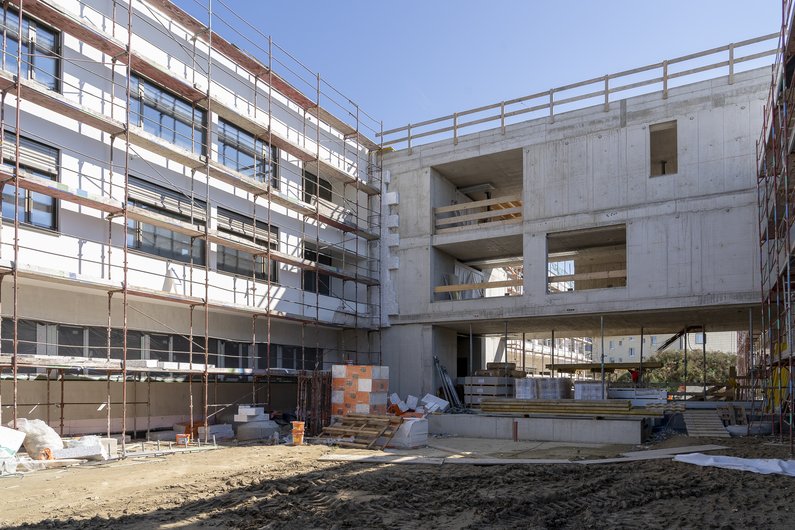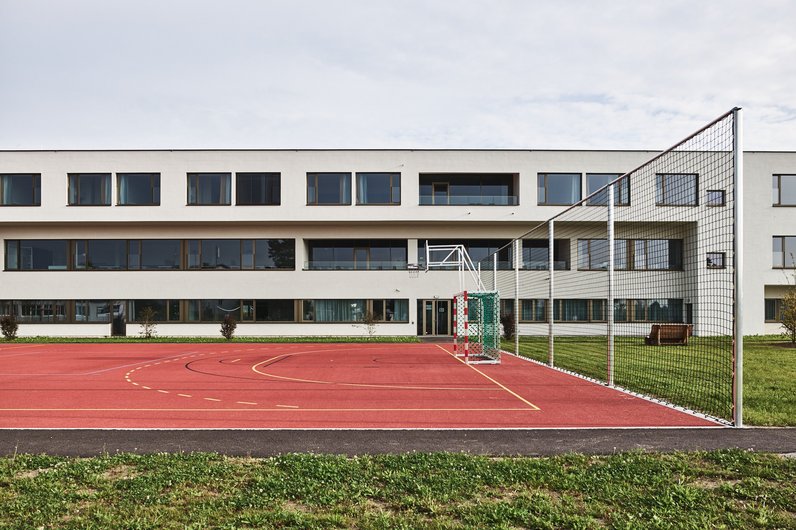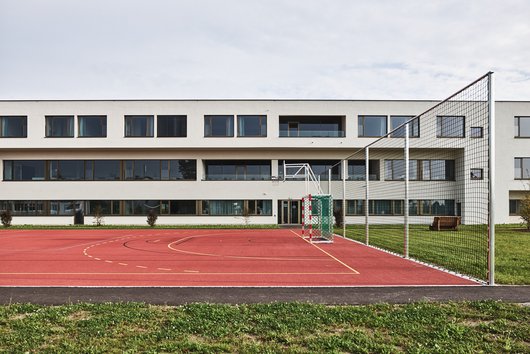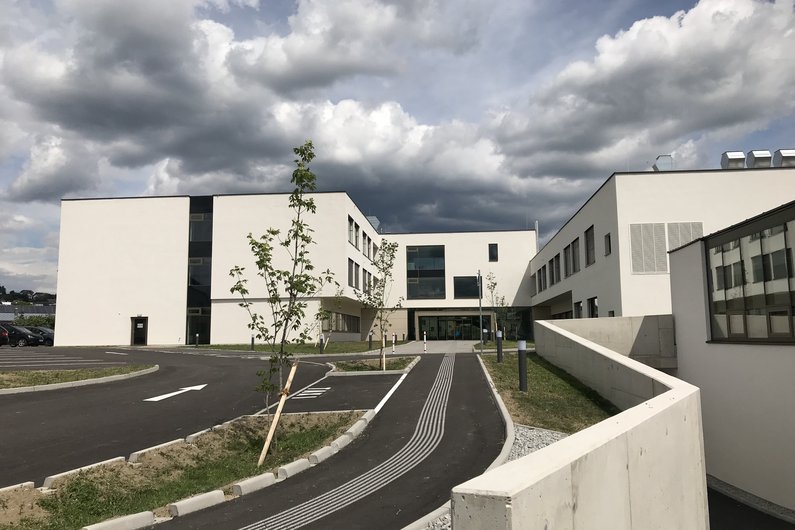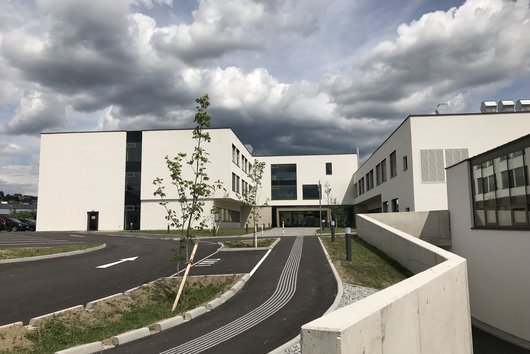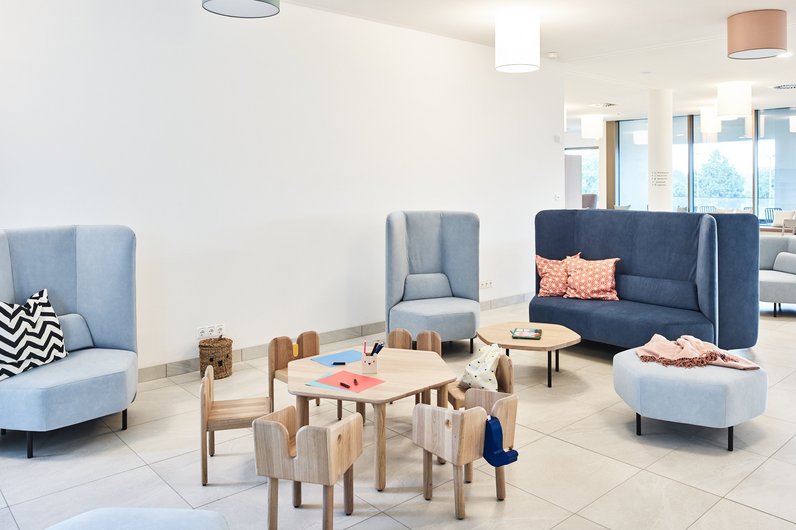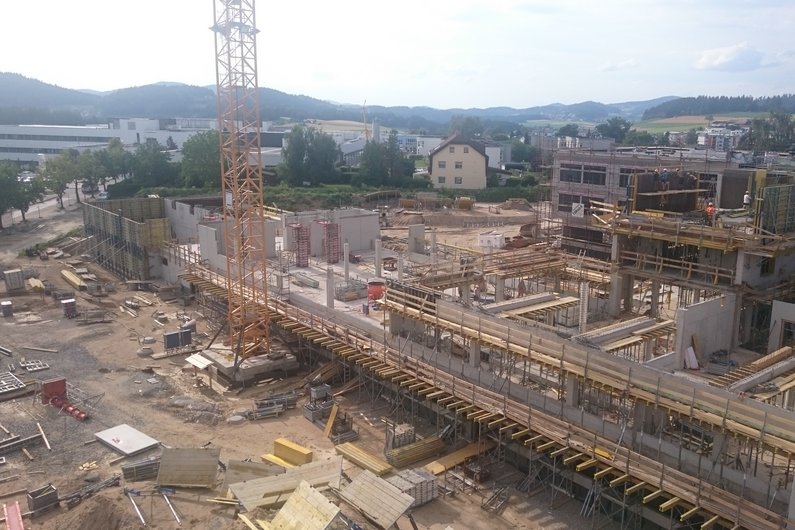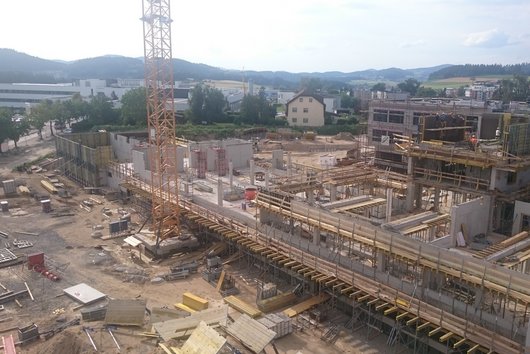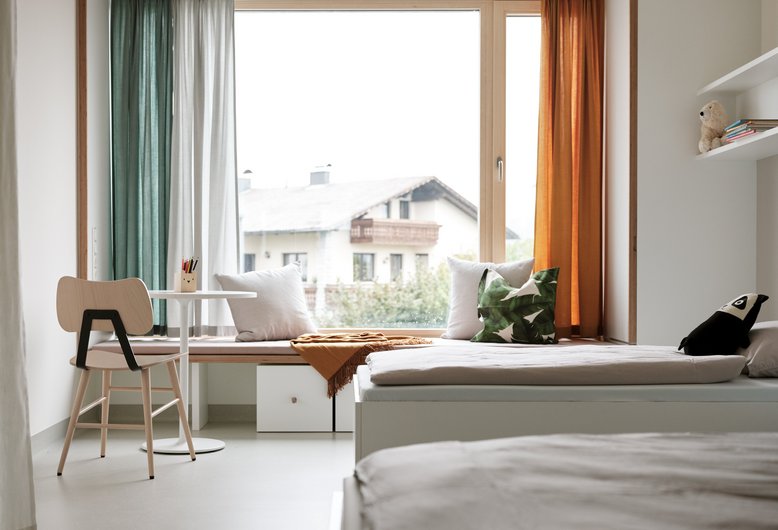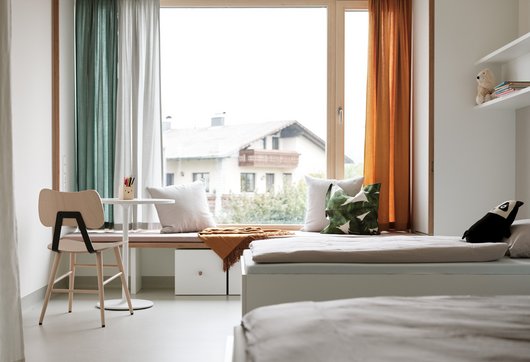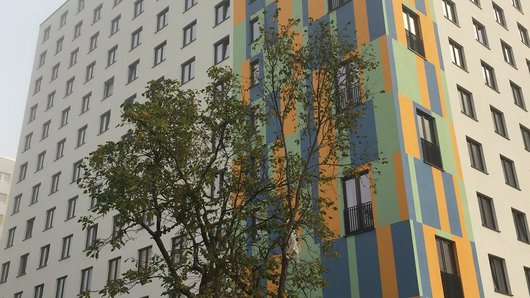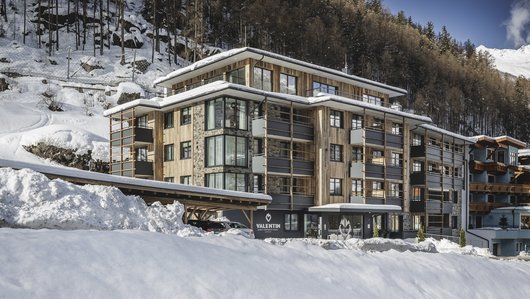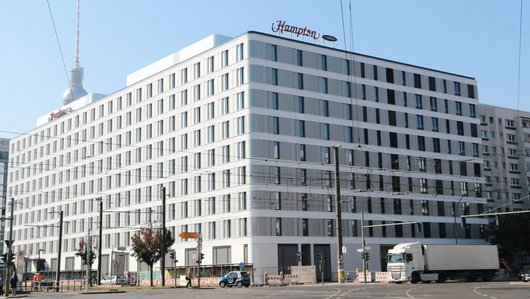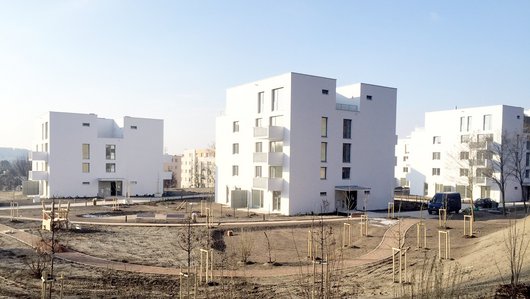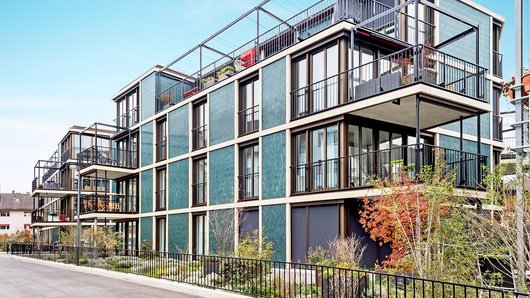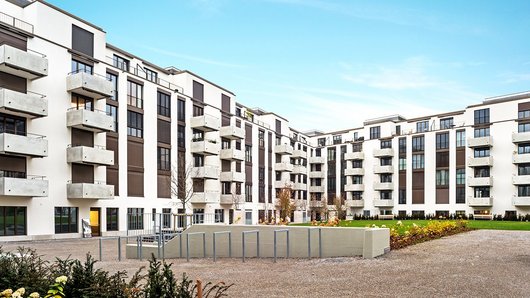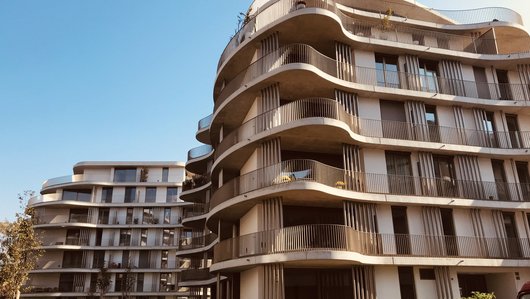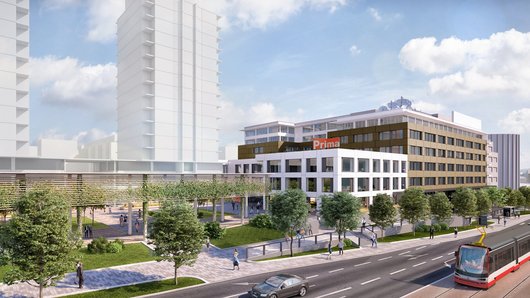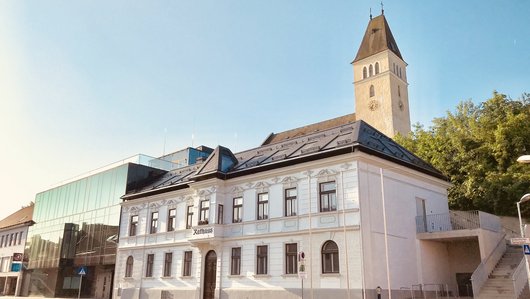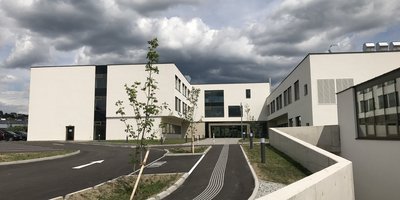
Kokon rehab centre
The KJR Rohrbach consortium was the general contractor for the Kokon children and young people's rehab centre in Rohrbach-Berg. The order volume was 15.4 millio
PORR is a shareholder, through its own healthcare department, in eight rehab centres across Austria, which it operates with hospitals Projektentwicklungsges.m.b.H. The latter company was our client for the Kokon rehab centre.
-
EmployerKinder-Reha Rohrbach-Berg GmbH (hospitals Projektentwicklungsges.m.b.H)
-
ContractorARGE KJR Rohrbach – PORR NL OÖ und Stmk - STRABAG
-
ArchitectArchitekturConsult ZT GmbH
-
Order typeTotalunternehmer
-
Project typeBuilding construction . Health facilities
-
Project scopePlanning and building a children's and young people's rehabilitation centre
-
Order volume15.4 million euros
-
Construction startOctober 2017
-
Construction endApril 2019
The Kokon project was hardly a straightforward task, with varied ground conditions, structural work being completed in parallel, and highly complex mechanical & electrical engineering. A number of PORR departments worked shoulder to shoulder to complete the rehab centre for children and young people successfully, and meet the tight time schedule despite hostile weather conditions.
Background
Kokon rehab centre in Rohrbach im Mühlviertel has 77 beds for young patients and 67 beds for accompanying adults, on a total usable area of 5,500m² with a gross floor area of 10,500m². Construction work began in October 2017, with the KJR Rohrbach consortium, comprising PORR's Styria and Upper Austria branches along with STRABAG, as general contractor. PORR headed up the technical side, while STRABAG took on the commercial management. In parallel with the Rohrbach project, a Kokon children and young people's rehab centre was also being built in Bad Erlach in Lower Austria.
The interior finishing was staggered across the individual storeys and building sections. This ensured construction work could progress as efficiently as possible.
Varied ground conditions
The consortium built the rehab centre on an undeveloped site. The first construction phase involved removing the hummus and starting excavation. This was followed by installation of the sewage channels and utilities. At this stage the consortium faced its first major challenge, in the form of the tricky ground conditions: rocky, very stable Mühlviertel granite alongside unstable loam. This meant that while in some places the team were chipping away the rock, in other areas a special foundation was being made from grouted ductile piles. The special foundation work was carried out by PORR's foundation engineering department.
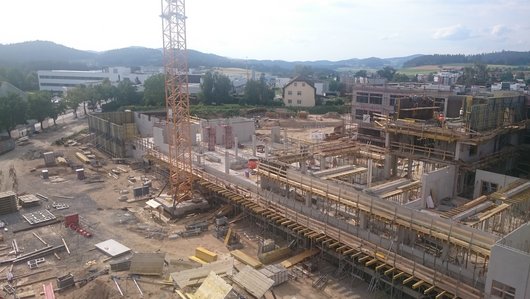

The team installed a total of 5,900m² of concrete and 600 tonnes of reinforcement in the building.
Construction work in parallel
The building has two storeys above the ground floor and two below. The underground levels, which extend to a depth of 9m, were built using in-situ concrete, while the consortium used pre-cast elements and composite construction for the above ground structures. A total of 5,900m3 of concrete and 600 tonnes of reinforcement went into the building.
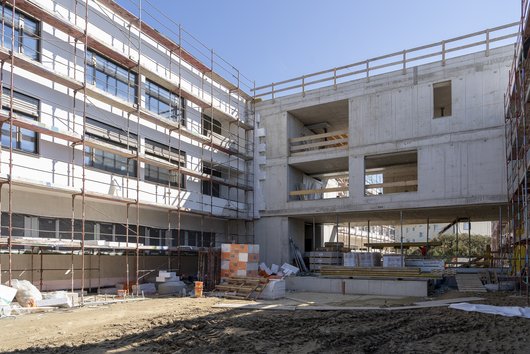

To achieve maximum efficiency, work continued in parallel, but staggered, on both tracts throughout the construction phase. While the structural work was still in progress in the southern tract, the structural work in the north had been completed and the northern team started on sealing the roofs and installing the windows and facade for the building envelope.
When the sealing work had been finished, the team started on the interior finishing: dry-lining the walls and ceilings, putting in the floors and floor tiles. Once again, the work was staggered across the different storeys and building sections, allowing construction work to progress as efficiently as possible.
Special requirements
The team also faced a challenge in the complex mechanical and electrical engineering. Developing the physiotherapy treatment facilities and satisfying stringent legal provisions generates extremely demanding requirements in construction schemes of this kind – applying to the entire interior fit-out, heating, climate control, ventilation, plumbing and electrical installations. In order to meet all these stringent requirements, the consortium took a pioneering approach to parts of the building technology – for example, installing concrete ventilation shafts with special interior insulation. To compound the challenge, the needs of the future users of the building had to be taken into account – children and young people. This meant various differences compared to a standard rehab centre – and not just lower toilets and washbasins. A whole swathe of safety measures had to be put in place and all the facilities had to be easy to use. The planning and implementation of the special physiotherapy facilities, indoor pool and gymnasium were correspondingly complex.


Healing atmosphere
The team's final task was to build the extensive outdoor facilities. These include a sports ground, several children's playgrounds, table tennis and slacklines, a scooter track and a number of tobogganing slopes. The activity zones are interspersed with quiet zones with health loungers and nature areas with generous lawns and plenty of woodland. Whether outside or inside, great emphasis was placed during planning on the wellbeing factor. The goal was to avoid a sterile clinical environment that would intimidate the young people, instead giving the completed centre a friendly hotel character to support the healing process.
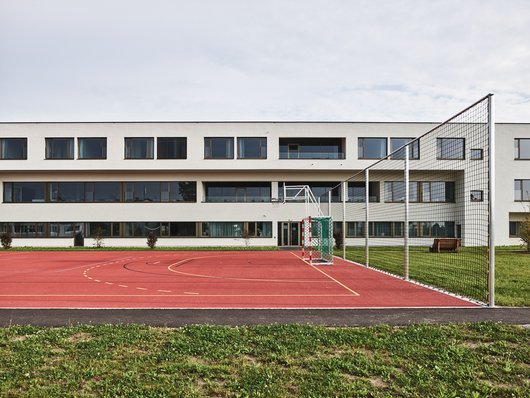

Summary
The tight construction schedule and hostile weather conditions meant all participants had to give their all to get the project complete in the one and a half years between the initial groundbreaking and project handover. Particularly bleak winter conditions in 2017/2018 made for a very hostile working environment during the structural phase; indeed, at one point construction had to stop altogether. The entire site was covered with up to 40cm of snow for several weeks, with temperatures falling to -20°C, creating complex construction and logistical challenges for the consortium. In addition, new, innovative approaches were required to meet the stringent hospital and rehab centre standards and develop custom designs to cater for the young patients.
Despite the challenges, the consortium successfully handed over the building in March 2019, ready to be furnished. The outdoor areas were handed over in May of the same year. The Foundation Engineering and Earthworks departments and IAT were the key participants in the project.
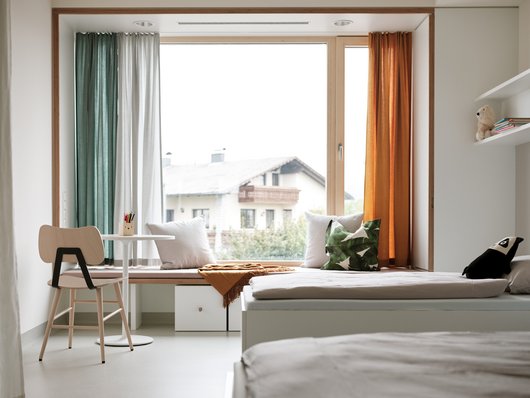

Technical data
-
Total floor area10,500m²
-
Floor space5,500m²
-
Parking spaces130
-
Building height11.50m
-
Ductile piles522 piles
-
Formwork25,500m²
-
Concrete installed5,900m²
-
Reinforcing steel installed600t

